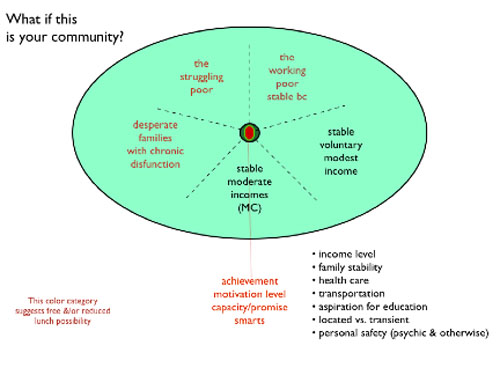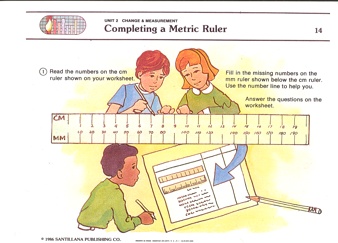This diagram is portion of a piece I do with students on learning as an interactive process. The point I try to make is that student outcomes like achievement, capability, motivational level, and performance (the red arrow coming from a red circle that represents a student at the center of often contending forces in a school) are determined by the context in which the student is educated. A given child may be seen as quite a different student with different levels of achievement, performance and observed levels of motivation in two different schools because of how the context of education in those two places are different.
A recent discussion about levels of poverty has got me thinking about deconstructing free and reduced lunch count, our profession’s proxy for poverty. The school community (light green circle) is made up of several groups of families. Three sets of families, those represented by reddish print, might identify as frl qualified. In terms of data crunching the relationships between poverty and achievement, all three categories of families collapse into one number. In fact, one category of family, the desperate family group, is the category most at risk for acquiring achievement gains in school. Their lives are so chaotic to meet basic needs (transportation, safety, etc. – the needs represented in black print ) that learning in school is compromised day after day.
As a district’s overall level of poverty rises, I suspect the number of families experiencing the most debilitating effects of poverty also rises. As the level of poverty rises, the schools and its teachers are called upon to provide much more support just to get their children to the point where they can focus and pay attention. Teaching time decreases. Performance suffers. Rates of academic engagement – talking and working together on academic tasks – drops.
What if we re-focused our free and/or reduced lunch count proxy for poverty to look at poverty through several lenses? What effect would this have on decisions we made about schooling? About teaching and learning processes? I would hope this diagram might serve to clarify thinking on the matter.

I also have to say that as Washington continues to exact resources from school and community programs, as Washington continues to consolidate and shift resources to state decision makers, as Washington continues to fund those who fail to see the relationship between community support and civil behavior, the situations facing schools continue to worsen. The basketball hoops in church yards have disappeared. The community training programs have dried up. The youth work jobs are no more. The federal government has turned its back on its most vulnerable and decreasingly hopeful people. Instead, we build more jails to house those we have left behind.


